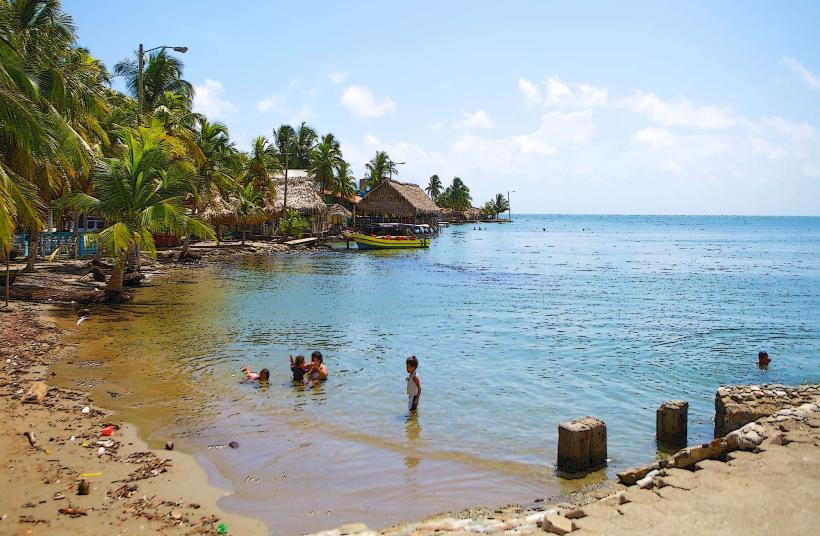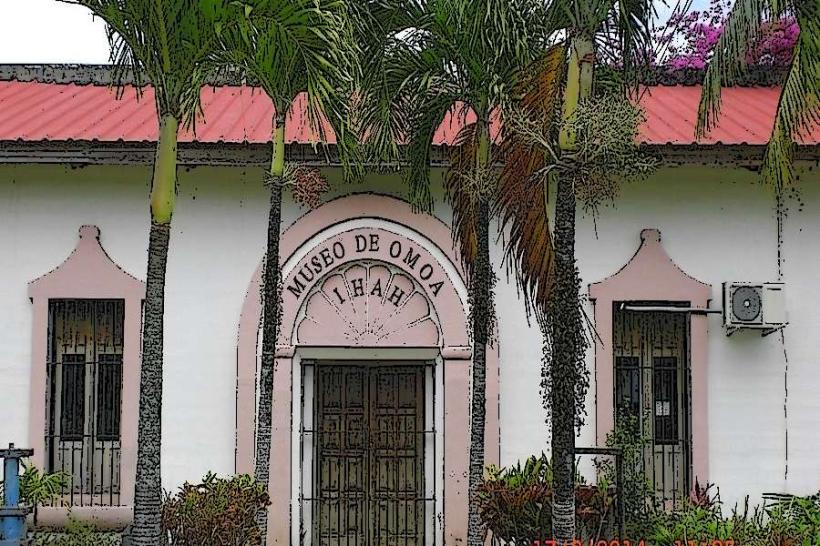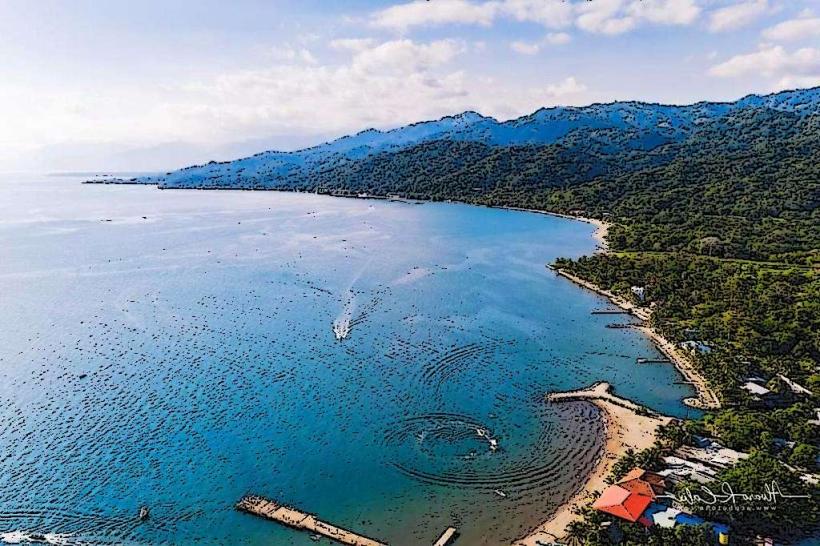Information
City: OmoaCountry: Honduras
Continent: North America
Omoa is a small coastal town located in the department of Cortés, in the northern region of Honduras, along the Caribbean Sea. Situated just a short distance from the larger city of Puerto Cortés, Omoa is known for its beautiful beaches, colonial-era fort, and proximity to important natural areas. Despite being relatively small, Omoa has a significant historical and cultural value, as well as a growing tourism industry.
Geography and Climate
Omoa is located on the northern coast of Honduras, about 30 km from Puerto Cortés and roughly 130 km from San Pedro Sula. The town is bordered by the Caribbean Sea to the north and surrounded by lush mountains and forests.
The climate in Omoa is tropical, with average temperatures ranging from 24°C to 32°C throughout the year. The area experiences a rainy season from May to October, while the dry season lasts from November to April. The warm, sunny weather in the dry months makes it a popular destination for tourists.
Urban Structure and Development
Omoa is a small town, with a central area that features local markets, small shops, and a few restaurants and hotels. While the town does not have large-scale infrastructure, it has seen some development due to its growing role as a tourist destination.
The town is divided into residential areas, the port area, and the historical zone surrounding the Fuerte de San Fernando, a colonial fort built in the 18th century. Surrounding rural areas include farmland and small fishing villages. Omoa is relatively peaceful and retains much of its small-town charm, although some parts of the town are in the process of modernizing.
Economy
The economy of Omoa is based on tourism, agriculture, and fishing, with growing development in commerce and infrastructure.
- Tourism: Omoa is known for its beautiful beaches, colonial architecture, and the Fuerte de San Fernando, which is a major historical site. The town is also a gateway to nearby natural attractions, including the Cusuco National Park and Caratasca Lagoon, making eco-tourism a growing part of the local economy.
- Fishing: Fishing plays a significant role in Omoa's economy, with many locals working in the fishing industry. The town’s port is used for both commercial and artisanal fishing, as well as small-scale trade.
- Agriculture: The surrounding region produces bananas, pineapples, and other tropical crops. Agriculture remains a key livelihood for many of the rural residents.
While tourism is expanding, Omoa still faces challenges related to poverty, especially in rural areas. The town has a limited number of jobs outside of agriculture and tourism, and many residents rely on seasonal work.
Transportation
Omoa is accessible by road, making it relatively easy to reach from nearby cities such as Puerto Cortés and San Pedro Sula.
- Roads: The town is connected to Puerto Cortés and San Pedro Sula via the CA-13 highway, which is paved and well-maintained.
- Public Transport: Buses and taxis are available for transport within Omoa and to nearby towns.
- Air Travel: The nearest major airport is Ramón Villeda Morales International Airport in San Pedro Sula, about a two-hour drive away.
Demographics and Culture
Omoa has a predominantly mestizo population, with some Afro-Caribbean and Garífuna influences, particularly in the nearby coastal communities. The town’s culture is a mix of indigenous, African, and Spanish influences, and many local traditions, music, and food reflect this diverse heritage.
Spanish is the primary language spoken in Omoa, though the Garífuna language is used in some coastal communities. The culture is centered around family, community, and local traditions, with frequent celebrations of Catholic holidays, local festivals, and public events.
Social and Security Situation
Omoa is generally considered a safe town compared to larger cities in Honduras, though like any tourist destination, visitors should take precautions against petty theft. The town has a small police presence to maintain public order, especially in areas with high tourism traffic.
Healthcare services in Omoa are limited to small clinics and health centers, with more advanced medical care available in nearby Puerto Cortés or San Pedro Sula. Education is available through local schools, but more specialized educational opportunities are found in larger cities.
Environmental Concerns
Omoa's natural beauty is one of its main attractions, but it faces some environmental challenges:
- Coastal Erosion and Pollution: Like many coastal towns, Omoa faces threats from erosion, especially during the rainy season. Pollution from tourism and local industry is also a concern, although efforts are being made to address these issues.
- Deforestation: Expanding agricultural and tourism development threatens the local ecosystems, particularly the forests and mangroves.
- Sustainable Tourism: While tourism is a key driver of Omoa’s economy, there is a growing focus on developing sustainable tourism practices that protect the natural environment.
Conclusion
Omoa is a charming and historical coastal town that offers a mix of natural beauty, cultural heritage, and eco-tourism opportunities. Its beaches, historical sites like the Fuerte de San Fernando, and proximity to natural reserves make it an attractive destination for tourists. Despite facing economic challenges, Omoa is growing in both infrastructure and tourism, and continues to play an important role in the region’s development while maintaining its small-town character.




